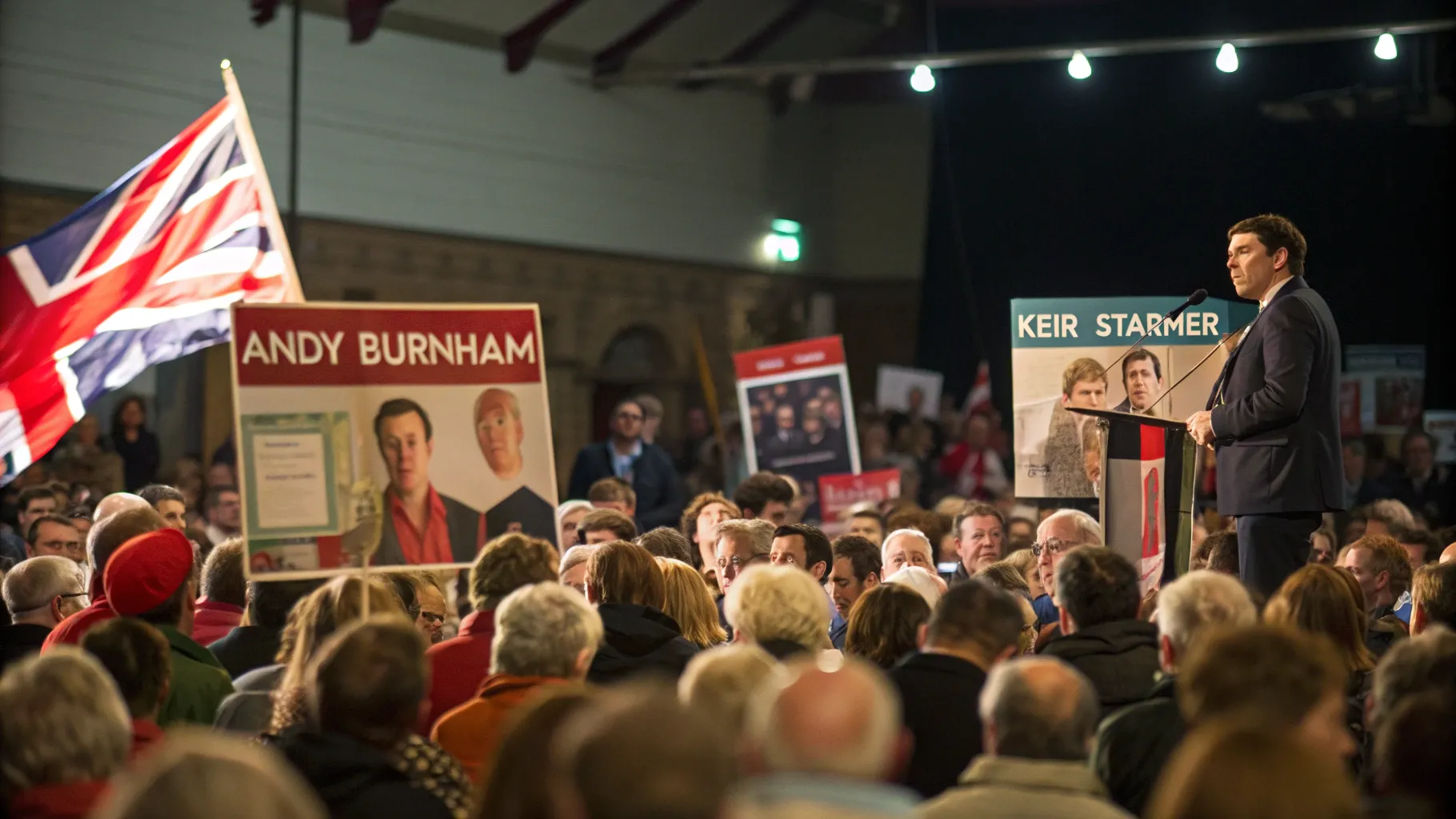Grassroots voices are clashing over the future shape of Labour leadership, with some accusing Greater Manchester Mayor Andy Burnham of stirring division while others rally behind Prime Minister Keir Starmer’s authority. The split, aired in recent community discussions across the North West, highlights uncertainty about Labour’s direction and unity as the party navigates its next phase in government and internal debate.
The comments arrive as party members and supporters weigh how Labour should balance strong central leadership with space for prominent figures outside Westminster. At the heart of the tension is whether Burnham’s high profile strengthens Labour’s reach or erodes party cohesion under Starmer.
Community Reactions
“Our community sees Andy Burnham’s supposed leadership manoeuvres as divisive. While some defended Keir Starmer’s authority, others questioned Labour’s overall direction and unity.”
Several members said the party needs clarity on who sets the agenda. Some argued that any public positioning by senior figures outside the Cabinet risks mixed messages. Others countered that debate is healthy and shows Labour is not insulated from scrutiny.
Those defending Starmer stressed the
need for discipline after a hard-fought return to power. Supporters of Burnham said his regional mandate and focus on issues such as transport, housing, and policing give Labour a broader reach. A smaller group voiced frustration that internal positioning distracts from delivery on core pledges.
Background on Party Leadership
Burnham, a former MP and Cabinet minister, has served as Greater Manchester Mayor since 2017. He has built a strong local platform on public transport reform and rough sleeping reduction, and has often pressed for more regional powers. His high profile makes him a frequent subject of leadership speculation, though he has denied planning a challenge.
Starmer, who led Labour back to government after years in opposition, has focused on fiscal discipline, public service repair, and planning reform. Party rules make leadership contests rare while a leader is in
office and backed by MPs. Still, Labour’s modern history shows that internal tensions can flare during major policy shifts, from the Blair-Brown years to the Corbyn-era splits over Brexit and party management.
Fault Lines and What Is at Stake
The current debate centers on tone, timing, and message control. Some local members worry that overlapping platforms could blur accountability. Others believe competition of ideas helps stress-test policy and keeps the party responsive to regions outside London.
- Backers of Starmer emphasize stability and delivery.
- Supporters of Burnham point to regional mandates and policy innovation.
- Undecided members want unity while avoiding policy drift.
The risk for Labour is a public perception of mixed signals on tax, public investment, and devolution.
Business groups and public sector leaders often seek predictability, and any suggestion of internal friction can complicate planning. On the other hand,
strong regional voices can surface local priorities faster than centralized systems.
Policy and Political Implications
On transport, Burnham has championed bus franchising and integrated ticketing across Greater Manchester. Allies say these projects offer a template for other city regions. If Labour leans into this approach, it could signal a wider push for city-led infrastructure and planning powers.
On national priorities, Starmer’s team has highlighted growth, housing supply, and NHS recovery. Analysts note that delivering measurable progress on these fronts will dampen leadership speculation. If living standards and public services improve, pressure for alternative figureheads is likely to fade.
Local councillors consulted this week stressed three tests for the party: show visible improvements within a year, maintain a single national message on tax and spending, and give mayors room to tailor delivery without drifting from core goals.
What Comes Next
Party figures expect a clearer division of labor: Westminster
sets national priorities while mayors focus on implementation. Communication will be key. A misstep—such as public disagreements on funding or timelines—could reignite talk of strain.
Privately, members say the coming months will hinge on public service metrics and visible gains in housing and transport. If those move in the right direction, the leadership debate will quiet. If not, calls for sharper regional autonomy, and the personalities linked to it, will grow louder.
For now, the grassroots remain split. Some want a tight ship under Starmer. Others want louder regional leadership with Burnham as a driver of change. The party’s challenge is to align both impulses, keep policy on track, and avoid letting speculation eclipse delivery. Watch for how Labour handles mayoral powers, transport funding, and housing targets. These decisions will
reveal whether unity and momentum can be maintained without muting influential local voices.






